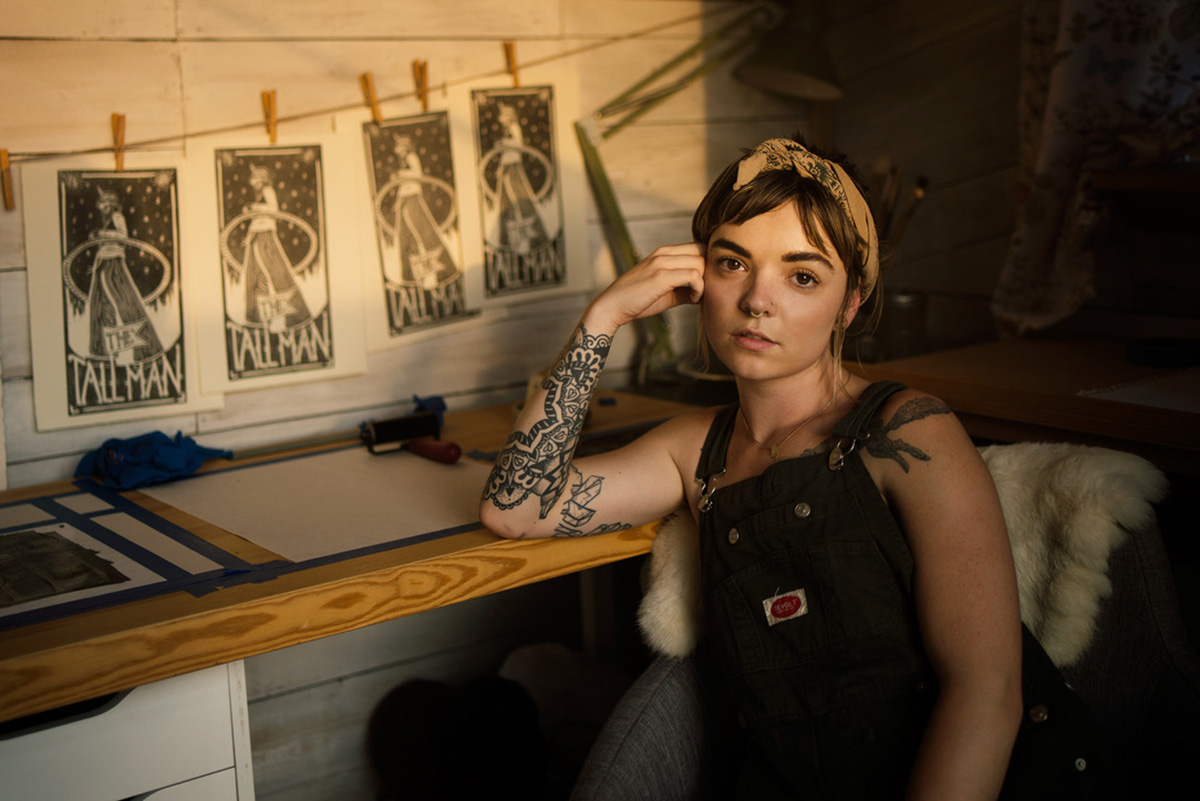Stripped-Down Storytelling
Aaron Anderson unravels each subject’s layers for compelling portraits with his lineup of Tamron lenses.
Share the article:
More Photo Tips | Video Gallery | Photo Gallery | Enewsletter sign-up
By Jenn Gidman
Images by Aaron Anderson
When Aaron Anderson first started dabbling in photography, it was more or less by accident. “I’d bought a camera for my wife, and I found, to my surprise, that I was very interested in it,” he says. “I started diving into how the camera worked, then bought a reflector and speedlights. Before I knew it, my wife and I were having a serious conversation about turning photography into a career.”
After studying at San Francisco’s Academy of Art University and working as a retoucher for a Bay Area commercial retouching firm, the Colorado Springs photographer has since been shooting freelance for about 10 years, specializing in portraits and composites at Aaron Anderson Visuals. “It’s all about people for me,” Aaron says. “I love meeting people and telling their stories through my images.”
Helping Aaron tell those stories are his Tamron SP 35mm F/1.8 prime, SP 70-200mm F/2.8 VC G2 telephoto, and 18-300mm VC VXD all-in-one lens. “I always try to have the 35mm in my bag, because it offers a more cinematic feel,” he says. “When I put that lens on, the scene tends to look the way I imagined it. I also love the 70-200, because it has the ability to do so much. I’ve shot motocross with it, portraits, other in-studio work. It compresses the background so much differently than other lenses.”
Aaron appreciates how wide open he can shoot with his Tamron lenses. “I’m always able to push my lenses all the way to the limit and achieve amazing results,” he says. “I also recently got my hands on the Tamron 17-70mm F/2.8 VC RXD lens for my Fujifilm APS-C mirrorless camera system, which I’m excited to use for motion imagery.”
Tamron talked to Aaron about his work with Tamron lenses and how they help him stay adaptable in a rapidly changing photographic industry.
What’s the “Aaron Anderson style” when it comes to your images?
I’m very heavily influenced by the film world, so the word I typically use to describe my own work is “cinematic.” I want my portraits to look beautiful and exude a sense of wonder, but I don’t want them to be all about the lighting. Many times in photography, the lighting overshadows the subject.
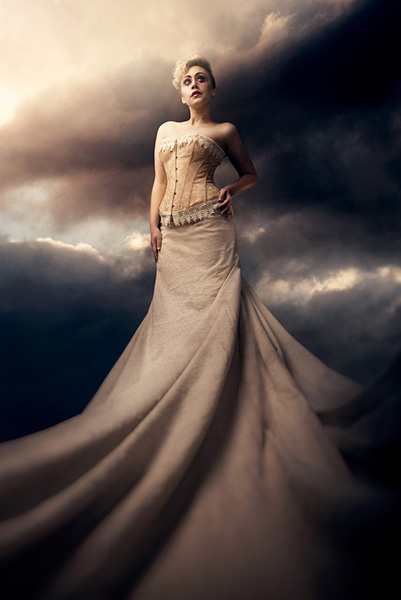
24-70mm (24mm), F/8, 1/250 sec., ISO 100
Click image to view larger

85mm, F/7.1, 1/250 sec., ISO 100
Click image to view larger
Instead, I’ve learned to use all kinds of different lights and make them disappear into the scene. I always head to the location where I’m going to shoot beforehand and see what kind of light I’m working with, and then utilize that lighting in a way that feels natural. So if there’s a lot of window light, I’ll go with all-natural light. If there’s a way for me to place lights overhead in a way that accentuates the scene I’m working with, that’s what I’ll do. I’ll balance the scene with daylight or tungstens or whatever else we have at our disposal. I want my images to look gorgeous without appearing overlit.
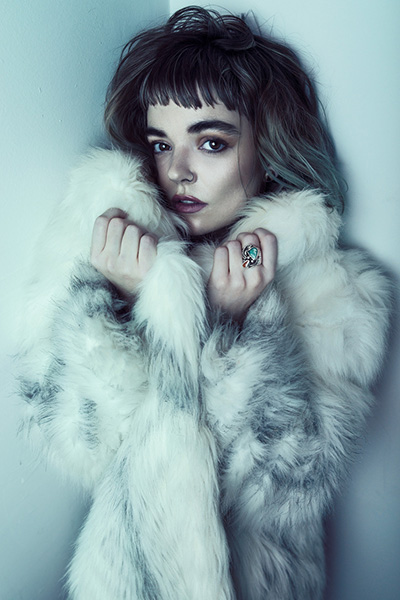
24-70mm (32mm), F/4.5, 1/250 sec., ISO 100
Click image to view larger
How do you get your subjects to relax and respond in front of the camera?
I know well the woman you see here sitting in front of the “Tall Man” prints. She’s a printmaker, and I asked if I could photograph her in her space. I took the time to really examine that space and learn about the place where she plies her craft. That makes a world of difference when it comes time for me to start taking photos.
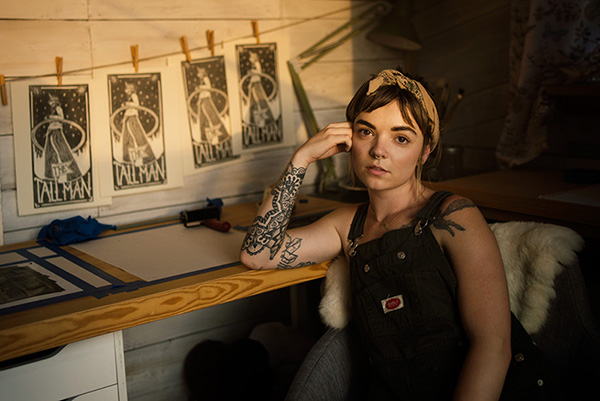
35mm, F/1.8, 1/500 sec., ISO 100
Click image to view larger
Obviously I won’t know every client quite that well or always be able to get a pre-session tour of their world, but if I can even just sit down and have a cup of coffee before we head into the studio, that helps break down the barrier that exists when you first have a camera in front of your face. The faster you can overcome that barrier, the faster you can get to those moments where your subjects are being authentic and showing that side that honors them and shows something cool about themselves.
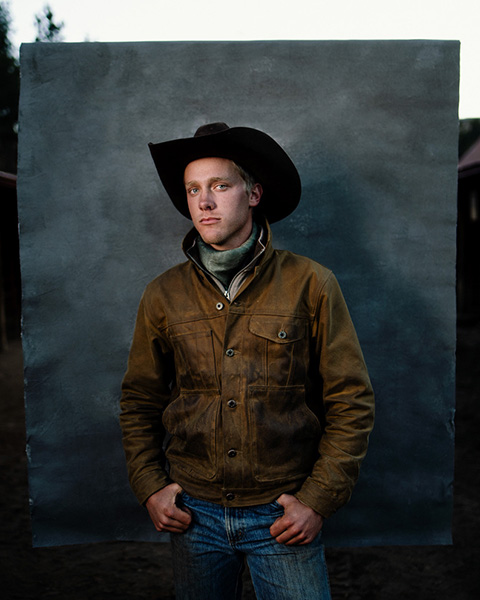
35mm, F/2.0, 1/250 sec., ISO 100
Click image to view larger
With subjects who specialize in something, whether it’s a sport or a hobby or a job, when we’re in front of the camera I’ll have them show me exactly what it is they do. For instance, with an athlete, I’ll ask them to show me the process of how they move when they’re playing or performing. I’ll have them hold that movement, or repeat that movement. Or we’ll go through the entire process and then I’ll ask them to do it again, but more slowly. The more natural a movement is to my subject, the more genuine the image comes across.

70-200mm (170mm), F/8, 1/250 sec., ISO 100
Click image to view larger
What about photographing children?
Taking pictures of kids naturally requires patience, but it’s more about speed. You need to capture the photo and move on to something else before their attention wanders. Or, if you do need them to stay in a certain position a little longer, give them something to do in that frame that’s entertaining.
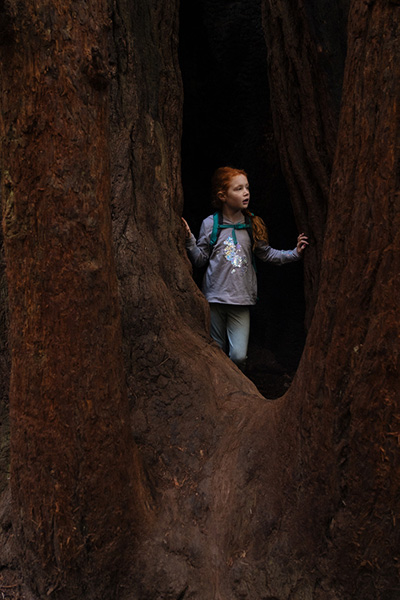
18-300mm (18mm, F/3.5, 1/60 sec., ISO 1000
Click image to view larger
It’s a little easier when I take photos of my own kids, who are long accustomed to the picture-taking routine. They’ve grown up with a camera pointed at them. My son will even say, ‘Is this good, Dad?’ and shove his face into the light. If all else fails, I can usually bribe them with toys. I’ll promise them that if we’re able to get through a longer shoot, that we can then go to the store and pick a fun game or toy out.
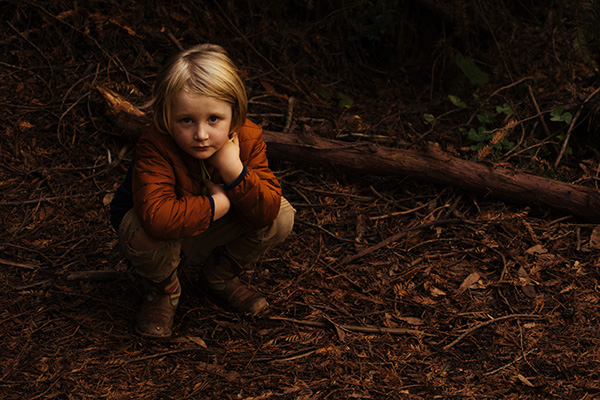
18-300mm (56mm, F/5, 1/125 sec., ISO 1250
Click image to view larger
How involved does your post-production work get?
Because my background is in retouching, that process is burned into me. After I make my selects and bring them into camera raw, I’ll spend an average of 45 minutes or so on each image in Photoshop, depending on how detailed the image is and what the concept is. For some of the composites on my site, it’s not unusual for me to spend 20-plus hours on the photo, depending on how many pieces there are to splice together and so forth.
After a decade-plus of portrait work, what’s been the most challenging aspect for you?
The industry is always changing, so trying to stay relevant on the artistic side is always demanding. I like to try different things, and it can be hard to experiment and still stay focused enough to draw clients in. That’s where portraiture has served as a bit of a cheat for me. By specializing in photographing people—and there are so many different types of people—I’m able to diversify my photos.
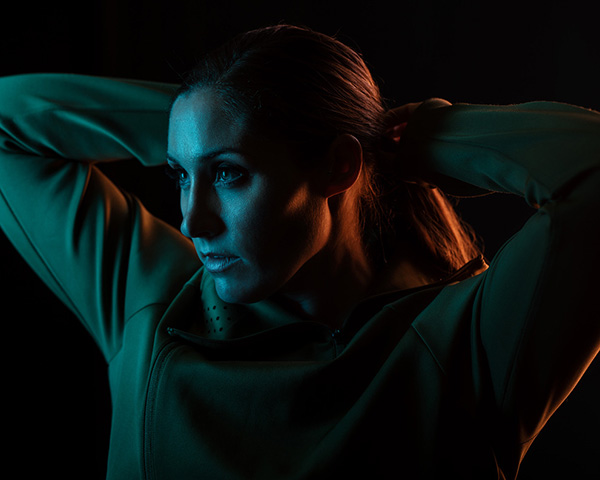
85mm, F/3.5, 1/250 sec., ISO 80
Click image to view larger
On the commercial side of things, such as pricing and client demands, everything changes rapidly. So we’re constantly looking for new ways to bring value to potential clients. For instance, I’ve started directing content like commercials. Clients are asking for motion photography more often, and when they first started asking for it, I initially told them I didn’t do motion. Now I do. Photography can seem like a young person’s game, but as long as you’re flexible and creative in how you adapt, you can stay in that game.
To see more of Aaron Anderson’s work, check out his website and Instagram.
More Photo Tips | Watch Videos | Learn More About Tamron Lenses | Photo Gallery
